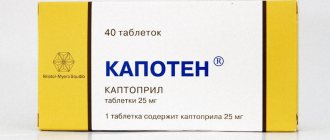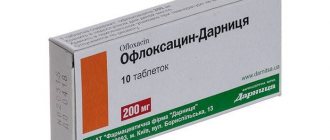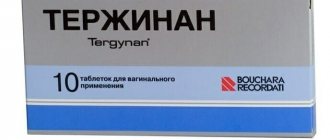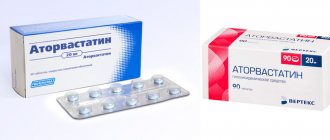Drug: medicinal Magnesia
Magnesia medicine is a high-quality and effective additional remedy used in such fields of medicine as gastroenterology, oncology, gynecology and neurology. It acts quickly and does not contain components that could harm the body. A gentle action is the basis of successful therapy, as it reduces the load on the organs. Each package contains instructions that contain all the information necessary for effective treatment:
- the approximate time when the remedy will begin to act;
- dosage;
- indications for use;
- points that indicate a prohibition on the use of the medicine.
Only a doctor can prescribe the exact amount of the drug, so self-treatment with Magnesia is prohibited. The instructions also contain information about the forms of the drug - it can be used as an intramuscular medication (injections) or administered intravenously - a dropper is placed. In the accompanying sheet (instructions) you can also find data regarding the features of the use of the drug by different categories of patients, which is why reading it is a mandatory step in successful therapy.
The annotation also contains information about the spectrum of action of Magnesia (its properties and effects on the body). The main ones:
- prevention of a dangerous pathological process - convulsive phenomena (reduction of manifestations and relief of symptoms if a convulsion has already occurred);
- antiarrhythmic effect (the drug magnesium is included in the complex of effects for diseases of the heart and blood vessels);
- providing a weak, but necessary for the success of treatment of some diseases, diuretic effect;
- calming (mild form) effect - useful for diseases affecting the nervous system;
- laxative (used for various gastrointestinal problems).
Additionally, you can get: good pain relief, normalization of bile flow (important in the treatment of diseases of this type).
Each of the listed properties manifests itself individually and depends on the existing disease, as well as the form of the drug and the route of its administration into the body. If the powder was used, then positive changes in well-being will occur in a few minutes. The peculiarity of the body is that it can react in 120 minutes.
The drug Magnesia has a mild laxative effect on the body. The effect lasts 4–6 hours.
Modern medicine can prescribe a remedy to improve the processes of bile outflow. At the same time, the effect of irritation of the walls of the duodenum is achieved and a pronounced antispasmodic effect is observed - pain in some diseases goes away completely or is significantly reduced. Taking the drug should be started as soon as the first symptoms of the disease appear, so its effectiveness increases.
About 40% of Magnesia, after the main effect on the source of the problem, is excreted from the body by the kidneys (with urine). That is why magnesium sulfate is used when there is a need to induce a diuretic effect. In this form, magnesium copes well with the effects of substances such as mercury (known for its harmful fumes), lead, barium salts or arsenic (a strong poison) entering the body. In case of poisoning, it is Magnesia that acts as a quick antidote. It is often prescribed to naturally increase resistance to negative influences.
If the administration was carried out intravenously, then the anticonvulsant effect is easily achieved. In order to achieve a hypotonic effect, normalize heart rhythms, calm the nervous system and constrict blood vessels, the drug can be administered both intravenously and intramuscularly. The use of Magnesia intravenously requires a visit to a specialist or inpatient observation - it is prohibited to install IVs on your own without sufficient experience and knowledge, as this can cause significant harm to health. You need to know that high levels of magnesium sulfate can cause the development of negative conditions:
- rapid relaxation, pain stops in the place where the source of the problem arose;
- hypnotic effect (severe weakness and drowsiness);
- drug-like conditions.
This is why it is very important to drip under strict medical supervision. If you need to treat the disease with injections, the drug begins to produce positive changes quickly (after about 50–60 minutes), and the effect lasts up to 4 hours. Also, the intravenous method of administration begins to act in 30–60 seconds, but the duration is reduced to half an hour.
The use of a magnesium solution is prescribed for a procedure related to physiotherapy - electrophoresis; a liquid base or powder suspension is also used in medicine for therapeutic baths. When treating colds or getting rid of inflammatory processes, a compress is used. Sports magnesium is used when you need to get rid of the problem of slippery hands. Medical indication for use. The use of Magnesia is prescribed when it is necessary to reduce the amount of acetylcholine in the peripheral and central nervous systems.
pharmachologic effect
The drug affects the duodenum, removing bile and laxative. In the intestine, absorption is not completely completed, but helps to normalize its functioning.
In case of heavy metal poisoning, magnesium plays the role of an antidote, showing an effect in the first seven hours.
Magnesium sulfate blocks calcium channels, prevents the formation of congestion in connecting areas, improves metabolism and muscle excitability, and prevents calcium from penetrating the intestinal membranes, relieving muscle cramps.
Magnesia, when administered into a vein, shows its positive effect after half an hour or an hour. About twenty percent of the drug is absorbed by the kidneys.
Injecting magnesium intravenously when the pressure is above normal helps to immediately reduce it, which is especially important in case of a sharp rise.
In the case of just one-time use, the drug helps in weakening smooth muscles, reduces blood pressure, increases diuresis, and prevents the occurrence of seizures and arrhythmias.
Release form
It is used in 95% of cases of prescription - a solution (it is usually called saline solution). A dry composition is also available for sale (a form for preparing a suspension; it must be diluted one or more times with water). The production of each form of MgSO4 is in demand, since the powder can be used to prepare special liquid types - suspensions, and ampoules for administering droppers or injections. Packages can contain 10 g or 25 g. The pharmacy also offers powder or balls with magnesium sulfate preparation, intended specifically for athletes.
Cost and analogues
The drug cannot be called expensive. The price of Magnesia depends on the form of release, the manufacturing company, the container and the pharmacy itself. The average cost in Russia is as follows:
- ampoules for injection of 10 ml in the form of a 25% solution in a package of 10 pieces - up to 65 rubles;
- ampoules of 5 ml in the form of the same solution and a similar volume - up to 50 rubles;
- powder for preparing a suspension in bags from 10 to 25 g - from 2.5 to 25 rubles.
Briquettes for athletes, Magnesia tablets in the form of dietary supplements, balls and other types of the product are more expensive. They are often sold on specialized Internet resources. However, in all cases, you should consult a doctor before taking it.
The drug has analogs that have the same active substance. Among them:
- Magnesium sulfate;
- Cormagnesin and others.
Instructions for use of Magnesia
If the doctor has not indicated another option in the prescriptions, then the dose of the drug should not exceed that indicated in the instructions. It can be used either intramuscularly or intravenously if the medication was purchased in ampoules. The instructions for Magnesia indicate that when the pressure rises, no more than 20 ml of a standard percentage solution should be administered, and this should be done slowly and carefully.
For convulsive syndrome - injections of 5-20 ml (per day). It is ideal to use it in this case in combination with anxiolytic drugs. In case of acute poisoning, the drug is administered by a special method, that is, intravenously - you have to use the drip method, in this case up to 10 ml is used.
Why did a lump form and remain after the injection?
Swelling and hardening of the needle insertion site is due to certain reasons. During the procedure, the substance intended for injection must enter the muscle layer, dissolve there and go further through the tissues of the body.
But if this did not happen, it means that the standards of the procedure were violated and, as a result, a lump formed. What did the nurse do wrong?
- very quickly
, especially the one with an oily structure, and the medicine did not have time to spread throughout the muscle tissue. In the West, this problem does not exist, since they use special syringes with which the drug can be injected slowly and evenly - I used a short needle
, since the myth that a short needle will cause less pain is quite common among medical staff. Such a needle does not even reach the muscle layer, the medicine gets into the subcutaneous fat and accumulates there - The vessel was damaged
during the injection, and the leaked blood formed a seal, turning it burgundy. It turned out to be a kind of swollen hematoma - It touched a nerve ending
, damage to which caused inflammation, accompanied by swelling. Sometimes there may even be numbness at the injection site.
Indications: when to use
The medication will help eliminate the manifestations of a variety of diseases. A suspension prepared from powder should be used when the following health problems are diagnosed:
- gallbladder dyskinesia;
- sounding has been carried out previously or is expected to be carried out;
- a bowel cleansing procedure is indicated (for example, before an examination);
- violation of acts of defecation, expressed in 90% by the occurrence of severe constipation;
- there are other diseases of the gallbladder;
- there is a problem with urinary retention;
- cholecystitis was diagnosed (the method of administration is developed individually);
- cholangitis (the administration system is developed by the doctor).
You will need to drip or give an injection when you have a history of the following diseases:
- blood pressure begins to rise or arterial hypertension is diagnosed;
- there is a delay in labor;
- pregnancy occurs with uterine hypertonicity or there is a possibility of premature birth;
- hypertension;
- there is a cardiovascular problem - ventricular tachycardia;
- encephalopathy (brain problems, pressure in the intracranial cavity);
- history of epilepsy;
- poisoning occurred with salts of various heavy metals.
All prescriptions, a detailed diagram, how to drink and other recommendations are made by the attending physician, since there are contraindications to the medication.
When not to use Magnesia
The first unquestioning limitation is an allergy to the drug and hypermagnesemia in the patient.
For Magnesia injections, the restrictions are as follows:
- Arterial hypotension;
- AV block;
- Bradycardia;
- Depression of the respiratory center;
- Kidney failure;
- Two hours before birth.
Contraindications for suspensions are:
- Bradycardia;
- Low pressure;
- Dehydration;
- Inflammation of the appendix;
- Rectal bleeding;
- Intestinal obstruction.
The following restrictions apply to the use of the parenteral route:
- Abnormal muscle weakness (myasthenia gravis);
- Diseases of the respiratory system;
- Kidney diseases;
- Acute stages of gastrointestinal inflammation;
- Various pathologies of the heart muscle and its blockade.
Contraindications
Indications for use of Magnesia intravenously or intramuscularly indicate a wide range of different diseases, but there are also some restrictions that do not allow the use of the drug in a recovery program. The main contraindication is also determined based on the examination results. Not recommended for hypotension (natural low blood pressure or resulting from another pathological process). It is prohibited if there are problems with cardiac impulses or if there is a mention of severe bradycardia in the “medical history”. Also reasons for exclusion from the therapy program will be:
- breathing disorders (diseases, chronic problems, consequences of undertreatment of another type of pathology);
- immediate prenatal period (at least 120 minutes);
- tuberculosis;
- diabetes mellitus (with caution);
- suspected or confirmed appendicitis;
- kidney problems (failure);
- bleeding (rectal);
- long-term or short-term dehydration.
Also prohibited is a disease called intestinal obstruction.
That is why any drug with magnesium (Magnez, Magnesium, Magnelis) must be prescribed in an individual dosage. Severe inflammation, such as sinusitis or a cold, may cause withdrawal.
Side effects and overdose
Taking the drug can cause a number of side effects in different categories of patients:
- dyspnea;
- lesions of the gastrointestinal tract and relapses of chronic gastrointestinal diseases;
- thirst;
- diarrhea, vomiting, nausea and other digestive system disorders;
- flatulence;
- dizziness;
- convulsions;
- heart rhythm disturbance;
- numbness of the limbs;
- severe headaches;
- increased fatigue;
- disturbance of consciousness;
- rush of blood to the face;
- speech impairment, etc.
If the patient neglects the doctor's recommendation and does not comply with the dosage indicated in the instructions, he may experience symptoms of overdose. These include:
- depressed consciousness;
- tendon activity leading to loss of reflex functions;
- disruption of the respiratory centers;
- heart failure;
- uterine atony in women;
- cardiac conduction disturbance;
- increased urine volume;
- hyperhidrosis.
To relieve such manifestations, the patient is prescribed a solution of calcium gluconate. It is administered intravenously or intramuscularly. If a person loses consciousness, then artificial respiration is given to him, and if there is pronounced depression of cardiac activity, an indirect cardiac massage is performed. Oxygen therapy is also allowed. When the patient's condition returns to normal, he may be given symptomatic treatment.
Side effects
If the dose is exceeded (prescribed), undesirable symptoms may develop - side effects, the effect of the drug aimed at worsening the health condition. It is important to know what to do in this case; the best option is to see a doctor. Problems such as bradycardia or diplopia may develop, some experience a sudden rush of blood to the facial area, and the person will feel hot. In 60%, the occurrence of headache is a symptom of exceeding the dosage. Another common side symptom is a strong decrease in blood pressure. From the gastrointestinal tract:
- nausea;
- vomiting processes;
- flatulence;
- diarrhea (a problem directly related to changes in stool).
A certain percentage, if an overdose has occurred, feel thirsty. Accordingly, there are: weakness, an increased risk that disruptions in the functioning of the heart and breathing will occur (a stroke is possible against the background of low blood pressure). Sometimes - confusion, slurred speech, arrhythmia and convulsions. In order to reduce the concentration if the dose is exceeded, you need to take a medicine containing calcium - a tablet of calcium chloride or gluconate.
Pharmacokinetics
Absorption of magnesium Mg++ occurs in the gastrointestinal tract. It should be noted that with oral administration, absorption is not optimal and reaches only twenty percent. This state of affairs is due to the fact that the drug forms a huge number of bonds with proteins and fats of food located in the gastrointestinal tract.
Reduces the quality of absorption and excess of phosphates or calcium ions on the gastrointestinal mucosa. Osmotic pressure increases and, accordingly, intestinal motility increases, and duodenal receptors are irritated. Irritation and increased intraintestinal pressure causes defecation within four to six hours.
It is excreted from the body by the kidneys, increasing diuresis. It passes freely through the hemaplacental barrier.
The drug becomes effective no later than one hour after intramuscular administration. The positive effect of taking it lasts up to four hours. With intravenous injections, the effect begins almost instantly. But the result does not last long: about half an hour.
Interaction: drugs
When choosing Magnesia as a drug for the treatment of a specific disease, you should take into account that other medications can be used in parallel with this remedy. Here you need to pay attention to compatibility - it is not enough to inject magnesium correctly; it is necessary that the use of magnesium intramuscularly or by injection does not contradict the action of the drug used together. If you take muscle relaxants, their effectiveness will be significantly enhanced. Antibiotics (tetracyclines) reduce their effectiveness as their absorption from the gastrointestinal tract decreases. If used in combination with Nifedipine, it is possible that a certain muscle or group of muscles will weaken. The effectiveness of drugs called anticoagulants also decreases. Some heart medications will also lose their potency. Helps absorb b6 - the vitamin is useful for people involved in sports.
Drug interactions
When taken together with other medications, it is important to consider how Magnesia interacts with them. The following features should be noted:
- peripherally acting muscle relaxants - when used simultaneously, their effect is enhanced;
- tetracycline antibiotics - their effect decreases as their absorption in the stomach decreases;
- gentamicin - rare cases of cardiac arrest with elevated concentrations of magnesium in the blood plasma;
- nifedipine - severe muscle weakness may occur;
- oral anticoagulants - their effectiveness decreases;
- phenothiazines, cardiac glycosides - their effect decreases;
- etidronic acid and ciprofloxacin - their absorption is reduced;
- streptomycin and torbamycin - the effect of the drugs is weakened.
Drugs with which the product is prohibited to be combined:
- alcohol in any form and alcohol-based medications;
- calcium-based products;
- alkali metal hydrocarbonates and phosphates;
- carbonates;
- procaine hydrochloride and many others.
Before starting treatment, you must inform the doctor about what diseases you have in your medical history and what other medications the patient is taking. How successful it will be depends on this.
You need to be especially careful when taking the drug orally or injecting it with it in case of myocardial damage or in case of suspected heart block. For epileptic seizures, Magnesia is used in combination with other drugs and measures.
Treatment with magnesia
In order for the medicine to work correctly, the drug must be used as directed. It is important to remember that you cannot drink more than you should drink per day. You also need to consider which of the properties should be activated and what to independently replace the treatment regimen. So, to obtain a suspension (dry powder diluted to the required concentration with water), you will need 25 g of MgSO4 and 100 ml of water (the effect will be choleretic). You need to make a medicine based on boiled water (1 tbsp / 3 times a day). Works well in combination with b6.
Magnesia: injections/droppers
If you need to administer the drug intravenously or intramuscularly, then a ready-made solution is purchased for this purpose (ampoule use). The required component is already available here, you just need to carefully insert it - the vein should be clearly visible, the IV should be placed quickly, and instilled according to the recommendations (depending on the number of procedures, a monthly course may be suggested). Injections will also need to be given quickly so that the injection site stops hurting. You should ask your doctor how and where to inject. You also need to remember: the home type of treatment suggests that the daily dose of the drug should not exceed 200 ml or 30 g. You cannot reduce or increase the dosage on your own. The introduction of the product that Gurevich developed allows you to avoid bruises.
Properties and composition
The drug has several forms, which are selected depending on the patient’s condition:
- ampoules with a capacity of 5 and 10 ml containing a 25% solution;
- powder for suspensions with a capacity of 10 to 50 g;
- balls and briquettes;
- tablets, etc.
Patients are usually prescribed Magnesia in the form of injections and powder for suspension. The forms differ in their composition. The active substance of Magnesia is magnesium sulfate. A milliliter of solution for intravenous or intramuscular administration contains 250 mg. The substance is small crystals without a tint, which erode when interacting with oxygen, and dissolve well in various liquids.
It exhibits its medicinal properties best when administered by injection. In tablet form, the drug is presented with the addition of vitamins and other excipients.
The drug is used in various branches of medicine because it has a large number of properties. It is mainly prescribed as part of complex therapy. It has the following effects on the body:
- laxative;
- soothing;
- antispasmodic;
- vasodilator;
- tocolytic;
- anticonvulsant;
- choleretic.
In case of poisoning, the drug cleanses the body of mercury, arsenic, lead and other toxic substances.
Magnesia in injections is prescribed mainly after operations, as well as for epilepsy, encephalopathy and other serious diseases. In tablet form, the drug is used as a choleretic and laxative. The effect occurs within 1.5-3 hours and lasts up to five hours.
An influx of water enters the intestinal lumen, diluting the stool. They increase, causing active peristalsis, and the urge to defecate occurs. Bile leaves better when the walls of the duodenum are irritated.
Magnesia, administered intramuscularly or intravenously, helps to dilate blood vessels, calm, relieve cramps and lower blood pressure. At a high dose, a hypnotic effect can be achieved. If the drug is administered intramuscularly, it begins to act within an hour, and the duration of the therapeutic effect is about 4 hours. When administered intravenously, it occurs instantly, but does not last long.
Tablets are often prescribed as a laxative for heartburn, constipation, and flatulence. They are almost not absorbed by the digestive organs. When taken, the contents of the intestine liquefy and its motility increases. Increased stomach acidity, which often accompanies many gastrointestinal diseases, is reduced.
Magnesia sports
Instructions for use of the drug Magnesia sulfate in ampoules indicate that for sports you need to use the powder version of the product. As a result of its interaction with the skin, sweat production decreases. Consequently, the hands stop slipping, which is very important for those who engage in power sports, since the case of heavy objects falling out is not uncommon. Can be used to apply to the knee area to prevent the elements of a tracksuit from rubbing. In the photo the product can be seen in the form of a white powder.
Results of interactions with other drugs
Magnesia can depress the respiratory center by interacting with hypotensive agents. The same result is caused by barbiturates or narcotic painkillers used with magnesium.
Muscle relaxants used simultaneously with Magnesia have an enhancing effect on muscle blockade. Tetracycline and similar drugs are not used together with Magnesia, as it interferes with their absorption.
Mixing with preparations containing calcium, carbonates, bicarbonates causes Magnesium sulfate to form a precipitate.
For what soils is it used?
In a garden with black soil, fertilizers are applied as needed or when the risk of soil dehydration increases. To do this, the feeding procedure is carried out for preventive purposes. But there are types of soil for which magnesium is vital due to its low presence or complete absence.
Mineral fertilizer is always required on sandy and acidic soil. Substances found in these types of soils can harm plants. Reason: high acidity, which prevents magnesium from being absorbed sufficiently.
Use of magnesium during pregnancy
When prescribing magnesium, the doctor is guided by the condition of the mother and child.
Indications
- Increased uterine tone
- Arterial hypertension
- Convulsions
- Edema
These dangerous conditions can lead to hemorrhage, placental abruption and miscarriage.
Use of the drug in the first trimester is prohibited.
Treatment of pregnant women with magnesium sulfate is carried out only in a hospital. The doctor decides the dose and frequency of use.
Video on the topic
About the action of Magnesia in the video:
Magnesium is a unique component that improves the functioning of many body systems, relieves migraines, leg cramps, and also prevents the formation of gallstones. It is used to treat many pathologies.
Health experts unanimously say that magnesium plays an important role in promoting health, as well as improving immunity. Every person must ensure that a sufficient amount of this useful and irreplaceable component is present in his body.
Magnesia tablets are often used as a powerful choleretic and laxative. But you should not overdo it with taking this strong medicine, as problems with stool may occur.
Magnesium sulfate preparations
White Egret Personal Care, Epsom Salts, Unscented, 454 g
Kirkman Labs, Magnesium Sulfate Cream, 4 oz (113 g)
How long does magnesium sulfate stay in the body?
Magnesium sulfate usually reacts immediately and can remain in the body for at least several hours and up to about 24 hours. After treatment with high doses of magnesium, levels usually return to normal within a few days.
You can reduce your risk of diarrhea or stomach pain when taking magnesium if you take it with meals and also drink plenty of water.
Be sure to drink plenty of fluids when using magnesium sulfate, as it absorbs water in the digestive tract. Remember that getting extra magnesium from dietary supplements may be beneficial for some people, but it is important to eat a healthy diet containing magnesium. Foods rich in magnesium include leafy green vegetables, avocados, bananas, beans, whole grains, cocoa and nuts.
It is possible to defeat parasites
- a remedy for parasites for children and adults!
- Dispensed without a doctor's prescription;
- Can be used at home;
- Clears parasites in 1 course;
- Thanks to tannins, it heals and protects the liver, heart, lungs, stomach, and skin from parasites;
- Eliminates rotting in the intestines, neutralizes parasite eggs thanks to the F molecule.
A certified remedy recommended by helminthologists for getting rid of parasites at home. It has a pleasant taste that children will like. Consists exclusively of medicinal plants collected in environmentally friendly places.
There is a discount now. The drug can be obtained for 197 rubles.
Indications for use
For high blood pressure, magnesium sulfate is prescribed in tablets, in powder form for drinking, and most often by injection. Magnesia injections for hypertension are practiced by emergency doctors and can be used at home. The drug relieves the symptom, but does not remove the cause of hypertension. Indications for use are the following ailments:
- epilepsy;
- nervous hyperactivity;
- cerebral edema;
- eclampsia;
- magnesium fasting;
- cholecystitis;
- encephalopathy;
- risk of premature birth;
- arrhythmia of the ventricles of the heart.
The spectrum of action of the drug is wide and relief from seizures is also included in this list.
The medicine helps patients in a short time. The list of effects is large and is not limited to blood pressure regulation. Magnesium sulfate increases urine production, it is used as a vitamin to improve the functioning of the nervous system and as a means of removing toxins from the body. "Magnesia" to reduce blood pressure is taken to achieve the following therapeutic effects:
- relieving cramps;
- normalization of heart rate;
- relieving brain spasms;
- elimination of nervous tension, muscle relaxation;
- diuretic effect, stimulation of urine production;
- elimination of insomnia;
- activation of bile production;
- removal of decay products and poisons.
When the drug should not be taken
Although, according to numerous reviews, magnesium for constipation is a good remedy, it has a number of contraindications. It should not be used if the patient has the following abnormalities:
- Suspicion of appendicitis.
- Age up to 3 years.
- Bleeding from the rectum.
- Intestinal obstruction.
- Dehydration of the body.
- Nervous system disorder.
- Kidney failure.
- On menstruation days.
Experts warn that pregnant women should take magnesia with extreme caution, as the medicine can have a negative effect on the development of the fetus. Also, the drug is not recommended for low blood pressure in patients of this category.
Side effects
Magnesia may cause nausea
Take the medicine only as prescribed by a doctor, as it can provoke side effects that most often occur when the drug is used haphazardly:
- Nausea.
- Severe vomiting that can only be controlled with antiemetic medications.
- Exacerbation of gastrointestinal diseases.
- Increased fatigue.
- Decreased attention.
- Cramps.
- Gas formation.
- Severe spasmodic pain.
If at least one of these episodes occurs, you should immediately stop using the drug and consult your doctor.
Often, anomalies can occur due to individual intolerance to the main components of the medication.
What kind of medicine is this
Magnesium sulfate (also known as magnesium sulfate) is naturally present in sea water. They are colorless crystals that can quickly dissipate in the air and dissolve in water. It has a characteristic salty-bitter taste.
Available in the following forms:
- Powder.
- Injection.
It has the following medicinal properties:
- Laxative.
- Sedative.
- Eliminates cramps.
- Relieves spasms.
- Tocolytic.
- Choleretic.
- Hypotensive.
- Antirhythmic.
- Vasodilating.
Magnesia is often prescribed for poisoning caused by chemicals, metals and food. Its use is due to the fact that most of the poisons accumulate in the gastrointestinal tract, therefore, to improve the patient’s well-being, it is necessary to remove toxins from the body as quickly as possible, which is achieved by cleansing the intestines.
Magnesia
The drug is used as a laxative:
- For prolonged constipation, when other medications have not given the expected result.
- In acute phases of constipation with symptoms of body poisoning.
- Before an examination, such as a colonoscopy.
- Before surgery, when the intestines must be completely empty of their contents.
- Before performing “blind probing”.
Has a number of advantages:
- Gives a quick laxative result.
- Absolutely liquefies hard feces and stimulates intestinal motility.
- It has a gentle effect.
- Does not provoke inflammation of the mucous membranes.
- Improves the patient's well-being.
- The presence of magnesium promotes heart function.
- Activates the production of endorphins.
- Improves the structure of skin and hair.
However, it has some disadvantages:
- Does not eliminate the factor that causes constipation.
- It disrupts the water balance, thereby increasing the likelihood of dehydration.
- With long-term use (more than three months) it negatively affects the cardiovascular and renal systems.
Indications for use
According to the indications for use, magnesium injections help get rid of various pathologies in the field of cardiology, neurology and gynecology. Magnesium sulfate is a substance of inorganic origin related to sedative and vasodilator drugs.
The medicine plays a very important role in ensuring the full functioning of the human body, participating in the normal functioning of the digestive organs, as well as regulating the tone of smooth muscles. Among the indications for the use of magnesium, it is necessary to highlight the regulation of the functioning of the heart muscle and blood vessels.
Insufficient magnesium content provokes spasm of the walls of blood vessels and the heart muscle, causing an increase in pressure in the bloodstream and ventricular arrhythmia. This condition provokes severe headache and malaise, pressure in the chest, and nausea. Similar symptoms are observed during a hypertensive crisis.
If you have high blood pressure, you need to urgently administer medication to increase the concentration of magnesium in the body. Magnesia has a very good effect on the functioning of the entire body. Among the indications for magnesium injections, it should be noted:
- reduction of irritability;
- relaxation of the muscles of the artery walls and expansion of their lumen;
- decrease in blood pressure;
- elimination of cramps;
- relieving pain caused by spasms;
- removing intoxication from the body.
This medicine has cardioprotective qualities, preventing the formation of clots and blood clots, and carefully protects the heart and blood vessels from damage. All these therapeutic qualities of magnesia have a positive effect on the body in case of hypertension.
How to determine magnesium deficiency
Magnesium, firstly, is a meso-element - plants need it for approx. 2 orders of magnitude less than in the main nutrients, but also an order of magnitude higher than in the microelements themselves. Secondly, magnesium is a migratory element in the plant. In some depots it is not deposited and is actively transferred from old and formed organs to young and developing ones. Third, excess magnesium suppresses the absorption of another meso-element by plants - calcium, which inhibits their growth and reduces productivity. Therefore, before using magnesium sulfate for plants, you need to determine whether there is a magnesium deficiency in this case, and how it needs to be replenished.
Other mesoelements are almost always supplied to the soil by the technogenic environment, but in a small area where intensive farming is carried out, magnesium is actively absorbed by plants. Other microelements too. As a result, in a country house or garden plot, magnesium deficiency is most often observed against the background of general “microstarvation” and must be replenished by applying a complex microfertilizer. How to determine by external signs that plants are starved for microelements, incl. for magnesium, see video:
Video: signs of a lack of magnesium and other elements in plants
Visual inspection for magnesium
The best treatment for any disease is prevention. You can prevent magnesium deficiency (and thereby get a significant increase in the yield) by observing (preferably with photography) how new leaves unfold as the plants grow. If there is enough magnesium, then the next young leaves, as seasonal warming and increased insolation, will be slightly larger and darker than the very first. If the reserves of magnesium in the soil begin to deplete, then subsequent young leaves will gradually become smaller, lighter in comparison with the first spring ones, and their edges will remain tucked in longer when unfolded. Then it’s time to give fertilizing irrigation with magnesium sulfate, see below.
Determining magnesium starvation
Small-scale farming or for own consumption is carried out mainly by the method of dense polyculture - up to 10 or more types of food plants can be grown on a piece of land + flowers for cutting and sale. Here, a “spotty” magnesium deficiency in individual crops is more than likely. It is for this case that magnesium sulfate is optimal: it is applied pointwise (individually to plants or to the area under a specific planting). It is magnesium deficiency that manifests itself. types:
- spicy;
- chronic;
- scattered, or “grape” type.
Spicy
Acute magnesium deficiency is most often observed in crops that severely deplete the soil. Especially in a poorly maintained area, where weeds steal magnesium. Young leaves develop normally, only pale, but as soon as the leaf reaches maturity, its edges turn pale and immediately turn brown; the veins remain light (item 1 in the figure below). The phenomenon spreads to the leaf petiole, which dries out after turning brown. The veins remain light, and the old leaves remain healthy or almost healthy, pos. 2. In this case, the means to compensate for the magnesium deficiency is foliar feeding with urea, see below.
Signs of acute starvation of plants for magnesium
Chronic
Chronic starvation for magnesium occurs most often. on light permeable soils: sandy, sandy loam, pebble, cartilaginous. Easily soluble magnesium sulfate is easily washed away. If after spring refueling (see below) the heat hits quickly or the spring and early summer are rainy, then the reserves of magnesium in the soil will go into the soil waters and will be inaccessible to plants.
With chronic magnesium deficiency, individual light spots first appear on the leaves. Checking whether the problem is magnesium is quite simple: you need to press down on the petiole of the leaf with your finger. If it breaks off and the leaf is still juicy and elastic, it’s magnesium. If it bends and the sheet is limp, it is iron.
Signs of magnesium deficiency in the soil under plants
When the spots form a characteristic marble pattern between the veins (position 1 in the figure), there is no longer any doubt - the plants do not have enough magnesium. If “marble” appears on the leaves when you are not at the dacha, then after 3-5 days chlorosis will creep between the veins (pos. 2), then the discolored areas will turn brown (pos. 3), dry out, and the edges of the leaf will curl up, pos. 4. The sheet will lose its fragility. In this case, the plants need to be watered with a solution of magnesium sulfate at the root (see below), and after a day or two, simply water the planting.
Note: symptoms of chronic magnesium deficiency in potatoes are especially characteristic - the lower leaves fall off, while still quite viable.
Absent-minded
Signs of plant starvation for magnesium on carbonate soils
“Grape” magnesium deficiency is so named because it is most often observed in grapes. But it is also possible in other cultures; especially on carbonate soils with high insolation. Calcareous impurities and/or inclusions in the soil retain magnesium and slowly release it. In the latter case, magnesium deficiency manifests itself quickly, within 1-3 days, by redness or browning of old leaves between the veins and their edges turning down (see figure on the right). The leaves remain quite juicy, elastic and not brittle. Their color turns out to be completely uncharacteristic; for example, red instead of autumn yellow, like the grapes in Fig. on right. The usually light veins turn green and, together with the adjacent stripes, clearly stand out against the contrasting background. Young leaves either develop normally or show signs of acute magnesium starvation.
Signs of magnesium deficiency in grapes
In grapes themselves on neutral soils, brown dots between the veins first appear on the more illuminated areas of the leaves (position 1 in the figure); they can easily be mistaken for sun burns or from improper spraying. The veins still remain light. If the weather is dry, hot, clear, the leaves may turn red, as before. case. If it is cloudy and rainy, the brown spots turn pale, spread over the entire field of the leaf, and the veins remain darker, pos. 2. The outcome is the same in any case: the leaf gradually dries out between the veins, pos. 3.
Note: a characteristic sign of magnesium initial browning is brown “pixelated” spots, angular in shape, because At first, they do not touch even the smallest veins on the leaf (item 1 in the figure). Burn spots are more or less round.
The reason for “grape” starvation for magnesium is that the plant itself “pumps” it to organs that, at this stage of development, are more important for survival. Therefore, diffuse magnesium deficiency occurs most often in shrubs or vines during the fruiting period. The way to replenish it is to spray with a solution for foliar treatment without urea (see below) in the first stages (no later than position 2 in the figure). If the leaves suddenly change color and/or begin to dry between the veins, you will have to come to terms with the loss of part of the harvest.
How to take it correctly
It is best to start taking magnesium on a day off; for many, this is the most suitable option.
- Magnesium sulfate powder 20 g should be dissolved in water at room temperature and drunk immediately.
- Expect laxative effects within a few hours.
The intestines will begin to actively get rid of waste products, so it is worth considering that the urge to go to the toilet will be frequent. On the day of admission, you should refuse to eat. The next day the procedure can be repeated, but only on the condition that your health has not worsened. If symptoms such as mild malaise or weakness are observed, it is recommended to stop taking it immediately and return to your normal diet.
In general, a safe dosage is considered to be no more than 30 g per day, dissolved in water. The product perfectly cleanses and removes toxins. This can cause severe dehydration. In order to avoid such consequences, it is recommended to drink more plain, still water. With this product you can lose up to 2 kg of weight per day. It is worth understanding that the drink itself does not affect the fat layer in any way. You can take advantage of magnesium's ability to reduce appetite and start a low-calorie diet at this time.
How to take a bath with magnesium
A bath using magnesia powder is safer for weight loss. The optimal number of magnesium baths is no more than several times a week. It is recommended to carry out this procedure before bed, as it is relaxing and after it you will certainly be drawn to sleep. To prepare a bath, there is the following recipe: you need to take magnesia, regular and sea salts in equal proportions, then dissolve them in a bath with warm water. The procedure takes 30 minutes, but the entire body cannot be immersed in water. A bath with magnesium will bring an absolute feeling of lightness and calm your nerves.
How to drink in ampoules and powder?
Perhaps the use of magnesia is injectable, but it is worth mentioning its extensive effects on the entire body. The drug is available in ampoules as a 25% solution of 10 ml.
Magnesia in powder gives calmness, relaxes the walls of blood vessels, and helps normalize heart rate.
Wraps
There is an option to use magnesia in wraps. For these purposes, prepare black clay, water, and magnesium salt.
Dissolve the clay in water and while stirring, add magnesia powder. The finished composition is applied to the problem area and insulated with plastic film. After the procedure, you need to thoroughly rinse the mask with warm water.
Colon cleansing with magnesium
Before a planned colon cleanse, you should adhere to a lean diet, exclude salty foods, and drink more plain water. Colon cleansing takes two days, and the dosage is approximately the same as that used for weight loss. To normalize intestinal function, after cleansing, restore the water-salt balance in the body.
For 2-3 days you should drink at least 2 liters of water per day.
Properties
Unlike magnesium, as a trace element, magnesium sulfate (in medicine, better known as magnesia) is a medicinal product with magnesium ions and sulfate ions in its composition. The first mention of it appeared in 1695. At that time, the substance was isolated from mineral waters. Due to its external resemblance to table salt and similar taste characteristics, it has gained fame among the people as “Epsom” or “bitter” salt.
As a rule, the drug is prescribed for heavy metal poisoning and problems in the functioning of the gastrointestinal tract. In general, thanks to the special chemical formula, the scope of use is quite wide:
- treatment of severe forms of hypertension;
- elimination of convulsions and epileptic seizures;
- fight against constipation;
- help with ventricular tachycardia;
- recovery from concussion;
- therapy of bronchial asthma.
There is an opinion that magnesia has a fat-burning effect, which is why its popularity among fans of “easy” weight loss has sharply increased in recent years. In fact, this is nothing more than a myth. Magnesium sulfate promotes weight loss due to its special effect on the gastrointestinal tract, ideally cleansing food stagnation and harmful substances. Acting as a high-quality laxative, the pharmaceutical product demonstrates the following properties:
- promotes the accumulation of water in the intestines, due to which its contents are liquefied and peristalsis is enhanced;
- helps in the rapid removal of feces, and with them toxins, guaranteeing deep cleansing;
- facilitates the start of a diet, at the same time switching the body to “internal” nutrition, that is, the use of its own fat reserves.
“Epsom salt” attracts a lot of water, which allows you to quickly get rid of obvious and hidden swelling. Thanks to this action, literally on the day of use it is possible to see a plumb line of 1-3 kg, without making additional efforts to lose weight. Along with a laxative, magnesium sulfate demonstrates a choleretic effect. Released into the duodenum, bile helps to further cleanse the intestines of microbes and is involved in the rapid elimination of toxins.
Magnesium sulfate - instructions, application, reviews
Magnesium sulfate or magnesium sulfate (Magnesii sulfas) is the most common dosage form of magnesium.
Active substance
The active ingredient of the same name, magnesium sulfate, is a magnesium salt of sulfuric acid. Chemical formula – MgSO4. These are white or colorless rhombic crystals, with a bitter-salty taste. Magnesium sulfate is hygroscopic and dissolves well in water. Moreover, with increasing water temperature, the solubility of magnesium also increases. In some cases, the chemical interaction of magnesium sulfate and water leads to the formation of mineral compounds of crystalline hydrates. Magnesium sulfate is soluble in diethyl ether and glycerin, and practically insoluble in ethyl alcohol and acetone.
Mechanism of action
The medicinal effect of magnesium sulfate is due to the ability of its constituent magnesium to influence many physiological and biochemical processes in the human body. Magnesium enters the body in foods such as meat, fish, and seafood. At the same time, about 40% of the incoming magnesium is absorbed in the intestines. The daily requirement for magnesium for an adult is about 300-400 mg, and the body contains about 70 g of magnesium in total. 60% of this amount is in the bones, and the rest is in other tissues and biological fluids of the body.
Magnesium, along with other substances, is classified as a macronutrient, thereby emphasizing its biological significance and relatively high content. After all, in terms of content, magnesium ranks 4th, and is inferior to other macroelements - sodium, potassium and calcium. Moreover, there is much more of it in the cell than in the extracellular space - like potassium, it is an intracellular macroelement. More than 80% of intracellular magnesium is present in mitochondria, where it is closely bound to ATP. This macroelement ensures the synthesis of nucleic acids and enzymes, participates in protein, fat and carbohydrate metabolism, and neutralizes free radicals and other toxins.
Magnesium is also a physiological antagonist of another macroelement, calcium. Its action is aimed at neutralizing the effects produced by calcium. It is on this antagonism with calcium that the use of magnesium sulfate in clinical practice is based. Unlike magnesium, calcium is an extracellular macronutrient. Its content outside the cell is 25 times higher than inside the cell. This difference (gradient) is due to the action of the enzyme calcium-dependent ATPase, which pushes calcium out of the cell. The flow of calcium from outside to inside the cell along a gradient is ensured by specific carrier proteins. These transporters are located on the cell membrane, interact with calcium, and transport it into the cell. These transporters are called calcium channels.
The physiological role of calcium is diverse. It strengthens cell membranes and reduces their permeability, ensuring bone strength. The entry of calcium into smooth muscle cells triggers the interaction of contractile proteins, actin and myosin, which leads to contraction of smooth muscles in various organs and anatomical structures. In addition, calcium ensures neuromuscular transmission - the transfer of impulses from nerve fibers to skeletal muscles.
This happens as follows. There is a gap junction or synapse between a nerve fiber and a muscle fiber. The nerve impulse is transmitted through the synapse thanks to acetylcholine. This biologically active substance is located in the presynaptic (located in front of the synapse) nerve fiber in microscopic vesicles or vesicles. Under the influence of calcium, acetylcholine is released from the vesicles into the synaptic cleft, as a result of which the impulse passes along the synapse from the nerve to the muscle.
Calcium also ensures the propagation of the impulse through the conduction system of the heart with subsequent contraction of the myocardium. The distribution of nerve impulses in the brain structures ensures adequate functioning of the CNS (central nervous system). At the same time, it should be noted that many pathological processes in the central nervous system and in other organs and tissues occur with the participation of calcium.
Contraction of the muscular lining of small peripheral arteries (atherioles) leads to their spasm and an increase in blood pressure (BP). Contraction of the heart (coronary) vessels against the background of intravascular atherosclerosis and thrombosis leads to myocardial infarction. A similar process in the cerebral vessels is manifested by ischemic stroke. Myocardial infarction and cerebral stroke can be regarded as a disaster. The severity of damage in these diseases is further aggravated by the so-called. the phenomenon of theft.
This phenomenon is characterized by the fact that the blood is in areas of narrowing and rushes mainly to where the lumen of the vessels is normal. Coronary heart disease and myocardial infarction are often complicated by arrhythmias. Some of the arrhythmias, for example, ventricular extrasystole, paroxysmal supraventricular tachycardia, are life-threatening, and are also caused by excessive calcium activity.
Increased excitation processes in the central nervous system, in which calcium also plays a significant role, is accompanied by sleep disturbances, feelings of anxiety and fear. Pathological generation of impulses in some parts of the central nervous system leads to the development of muscle cramps. Increased contractility of the smooth muscles of the pregnant uterus can lead to miscarriages and premature birth.
Magnesium, being a calcium antagonist, blocks calcium channels, and thereby prevents the extracellular penetration of calcium with the development of corresponding pathological effects. Under the influence of magnesium, arterioles relax and blood pressure decreases, which is especially important for hypertension. The expansion of the lumen of the coronary vessels is accompanied by an improvement in blood supply to the myocardium. In addition, it has been found that magnesium prevents the formation of intravascular blood clots. Therefore, the risk of developing cerebral strokes and myocardial infarction after taking magnesium sulfate is reduced.
By dilating the coronary and cerebral vessels, the phenomenon of stealing is eliminated. Magnesia also protects blood vessels from damage in severe diseases, in particular diabetes.
Magnesium sulfate will slow down the conduction of impulses through the myocardium, and thereby prevent the development of severe arrhythmias. Blockade of calcium channels in the central nervous system is accompanied by the inhibitory effect of magnesium on brain structures, followed by sedation. Irritability and anxiety disappear, sleep normalizes. Therefore, magnesium is rightly called the anti-stress element or the metal of calm.
In contrast to calcium, magnesium inhibits the release of acetylcholine and slows neuromuscular transmission. This property of magnesium is used to eliminate convulsive syndrome. Magnesia has a tocolytic effect - it relaxes the maca and reduces its contractility. Sedative, anticonvulsant, antispasmodic, tocolytic and hypotensive effects make magnesium sulfate the drug of choice for conditions such as acute ischemic cerebrovascular accidents, traumatic brain injuries, and eclampsia. The latter condition is a severe form of late toxicosis of pregnancy (preeclampsia) with increased blood pressure, generalized vascular spasm and convulsions.
At the same time, an overdose of mania sulfate is also fraught with complications - severe uncontrollable hypotension, respiratory and cardiac depression, and inhibition in the central nervous system. Therefore, the recommended dosages should be strictly followed. Magnesium sulfate is poorly absorbed in the intestine, and therefore, to achieve the required effects, it is used by injection - intramuscularly, intravenously by stream, and intravenously by drip. When administered intravenously, it is often included in the so-called. polarizing mixture with glucose, inulin, and potassium. Insulin facilitates the intracellular transport of glucose, and at the same time potassium and magnesium.
Most of the magnesium taken orally is not absorbed, but remains in the intestinal lumen. At the same time, the osmotic pressure in the intestine increases, water is released into the intestinal lumen. The volume of intestinal contents increases, peristalsis increases reflexively, and all contents come out. The laxative effect is accompanied by increased flow of bile, caused by relaxation of the smooth muscles of the biliary tract and the release of the hormone cholecystokinin by the duodenal mucosa under the influence of magnesium. Magnesia is also used as an antidote (antidote) for poisoning with heavy metal salts. When magnesium reacts with these salts, non-toxic and harmless sulfates are formed, which are excreted through the intestines.
A little history
Magnesia sulfate was isolated from mineral spring water back in 1695. The new substance, which has a bitter taste, was called Epsom salt, which was used as a laxative over the following centuries. In the twentieth century, the role of magnesium in physiological processes was further established and an injection form of the drug was synthesized, which is actively used in Russia and abroad.
Synthesis technology
Magnesium sulfate is obtained through chemical reactions of magnesium compounds (oxide, hydroxide, carbonate) with sulfuric acid.
Interesting Facts
Some weight loss methods recommend magnesia as a laxative. They say that an increase in stool volume will automatically lead to weight loss. But everything is much more complicated. The problem is that the systematic use of laxatives will be complicated over time by chronic irritation and inflammation of the intestines. With feces, not only ballast substances are excreted, but also those that are necessary for normal digestion and metabolism.
Release forms
- Powder for oral administration;
- Ampoules of 25% solution 5 and 10 ml.
Occasionally you can find a 20% concentration of the drug or 20 ml ampoule. Magnesia is produced by many Russian pharmaceutical companies under the generic name of the active substance. There are no generics. In addition to magnesium sulfate, magnesium in the form of various compounds and in combination with other substances is present in such pharmaceutical preparations as Panangin, Asparkam, Magne B6, Magnerot, as well as in numerous dietary supplements.
Indications for use
For injection:
- Hypertensive crisis;
- Encephalopathy;
- Ventricular extrasystole and paroxysmal tachycardia;
- Eclampsia, eclamptic convulsions;
- Epilepsy;
- Other conditions accompanied by convulsive syndrome;
- Urinary retention;
- Threat of premature birth;
- Poisoning with salts of heavy metals;
- Conditions with an increased need for magnesium - pregnancy, stress, increased sweating, youthful growth, recovery from serious illnesses;
- Manifestations of magnesium deficiency (hypomagnesemia) – decreased myocardial contractility, arrhythmias, convulsive syndrome;
- Prevention of hypomagnesemia due to poor nutrition, alcohol abuse, long-term use of contraceptives and diuretics.
For oral administration:
- Constipation;
- Bowel cleansing before diagnostic procedures;
- Duodenal sounding;
- Cholangitis, cholecystitis;
- Biliary dyskinesia of the hypotonic type;
- Poisoning with salts of heavy metals.
Dosages
The injection solution is administered intramuscularly, slowly intravenously, or intravenously by drip. In the latter case, I dissolve it in saline solutions or in a polarizing mixture. Adults are administered 5-20 ml 1-2 times a day. The maximum dose for adults in terms of dry matter is 40 g. For children, the daily dose of administered magnesium sulfate is selected at the rate of 20-40 mg/kg.
Orally, for a laxative effect, take 10-30 mg of powder, previously dissolved in half a glass of warm water. Children take 1 g/kg. The drug is taken at night or on an empty stomach. For a choleretic effect, a 25% solution of Magnesium sulfate is taken orally, 1 tablespoon 3 times a day, and during duodenal intubation, 50 ml of a 25% solution is injected into the gastric tube.
Pharmacodynamics
Only 20% of magnesium sulfate taken orally is absorbed in the intestines. When administered intramuscularly or intravenously, it is distributed in all tissues of the body and penetrates the brain through the blood-brain barrier. When administered intravenously, the effect develops almost instantly and lasts half an hour; when administered intramuscularly, it develops after 1 hour and lasts 3-4 hours. Defecation after oral administration occurs within 4-6 hours. The drug is excreted by the kidneys. The rate of excretion depends on the concentration of magnesium in the blood plasma. When excreted in urine, a slight diuretic effect is observed.
Side effects
For intramuscular and intravenous administration:
- Cardiovascular system: decreased blood pressure, bradycardia, slowing of cardiac conduction up to cardiac arrest.
- Respiratory system: shortness of breath, paralysis of the respiratory center.
- Central nervous system: headache, dizziness, general weakness, increased fatigue, confusion, diplopia (double vision), severe sedation, slurred speech, suppressed tendon reflexes, convulsions.
- Gastrointestinal tract: nausea, vomiting, diarrhea, exacerbation of existing inflammatory diseases of the stomach and intestines, cramping abdominal pain, flatulence, thirst.
- Skin: hyperhidrosis (excessive sweating).
- Kidneys: polyuria (increased volume of urine excreted).
- Reproductive system: uterine atony.
Contraindications
- Hypersensitivity to magnesium sulfate;
- Hypotension;
- Bradycardia;
- Slowing of atrioventricular conduction;
- Severe chronic renal failure;
- Depression of the respiratory center;
- Prenatal period – 2 hours before birth;
- For oral administration – intestinal obstruction, rectal bleeding, appendicitis, general dehydration.
Interaction with other drugs
- Peripheral muscle relaxants – enhance the effect of these drugs.
- Tetracyclines slow down the absorption of these drugs in the intestine.
- Gentamicin is a risk of respiratory arrest due to an increase in the concentration of magnesium in the blood plasma.
- Nifedipine – muscle weakness.
- Anticoagulants, cardiac glycosides, phenothiazine derivatives – a decrease in the effectiveness of these drugs.
- Calcium chloride or calcium gluconate - used as an antidote (antidote) for an overdose of Magnesium sulfate.
Pregnancy and lactation
Magnesium sulfate penetrates the placental barrier and is therefore contraindicated during pregnancy. In obstetric practice, it is used, but according to strict indications (preeclampsia, eclampsia against the background of high blood pressure and convulsive readiness). Magnesium sulfate penetrates into breast milk, and its concentration in milk is 2 times higher than in blood plasma. Therefore, it is also contraindicated during breastfeeding. Otherwise, feeding is stopped.
Storage
Store at a temperature not exceeding 250C. Shelf life – 5 years. The drug can be dispensed without a doctor's prescription.
Age-related weakening of the immune system is slowed by antioxidants
Review of vitamin A (Retinol) history type of action properties
Bumps do not go away for a long time after injections, what to do?
There are two ways to solve this problem:
- contact a specialist
- use traditional methods
The doctor may prescribe you one or more of the above methods of drug treatment, as well as send you to physiotherapeutic procedures, which include heating with disinfecting lamps and using various electric massagers.
You, in turn, in order not to end up under the surgeon’s knife, can try several proven “grandmother’s” recipes.
Recipe No. 1.
A compress consisting of rye flour and honey, taken in a one to one ratio, is applied at night for seven days.
Recipe No. 2.
A honey cake, made from two tablespoons of honey, two teaspoons of butter and two raw egg whites, is applied overnight and covered with cling film secured with adhesive tape.
Recipe No. 3.
A curd compress, for which the curd is heated in a water bath, is applied overnight, covered with film and secured either with a band-aid or a gauze bandage.
Recipe No. 4.
A white clay compress applied for two hours is also effective in combating old seals.
Recipe No. 5.
A panacea for chronic injection infiltrates, according to many people, is a compress consisting of honey, alcohol and aspirin. Alcohol and honey are taken in a 1:1 ratio, one finely ground aspirin tablet is added, all ingredients are mixed and heated in a water bath. The compress is placed warm overnight, the application site is pre-lubricated with greasy cream or Vaseline.
The main thing to remember is that the bumps will not disappear overnight; you need to be systematic and regular in applying the procedures.
Indications and purpose of body cleansing with magnesium
Who can use magnesium sulfate to cleanse the intestines?
Polluted intestines and persistent stool disorders worsen metabolic processes, cause malaise, and decreased immunity. The main indications for cleansing the intestines with magnesium are:
- preparation for colonoscopy, long-term probing or surgery (information on preparation for gastroscopy and colonoscopy is here);
- regular constipation, bowel dysfunction;
- headache;
- obesity due to overeating;
- intoxication (acute, chronic);
- recovery after long-term drug treatment;
- metabolic disorders.
The result of consuming magnesium salts is:
- stimulation of intestinal motility,
- rapid evacuation of feces,
- removal of waste and toxins.
Composition and chemical formula
Magnesium sulfate is an inorganic chemical compound. The chemical formula or composition contains only two elements:
- magnesium;
- sulfuric acid.
The production of the substance has been established, since the properties of the powder are universal and are popular in industry, medicine and horticulture. The biological processes that occur with the help of magnesium contribute to the development of tissues and cellular composition in the body of plant and animal origin.
Properties and range of applications:
| Scope of use | Qualities |
| Life | Paper industry. Obtaining refractory material |
| Medicine | Reducing pressure and excessive excitability of the nervous system. Suitable as a choleretic and laxative. Promotes increased diuresis |
| Construction | Covering for airfields and roads. Often added to cement mixture |
Need to know! Absorption by living organisms (plant and animal origin) is better if magnesium is administered with water or food. For flowers and plant crops, it is better to introduce magnesium sulfate into the soil in liquid form.
Use during pregnancy and children
In childhood, magnesium is used mainly for therapy for constipation. You need to take the medicine in the form of a suspension, which is made from powder by diluting it in 0.5 tbsp. warm water. Children 6-12 years old are prescribed 6-10 g of medication per day, 12-15 years old - 10 g per day, over 15 years old - 10-30 g.
It is strictly forbidden to change the dosage of the medicine yourself, as this can lead to quite complex and dangerous consequences. In addition, medicated enemas may be prescribed to treat constipation. To prepare them, you need to take 30 g of magnesia powder and add 0.5 tbsp. warm boiled water. The resulting product is injected into the anus in 50-100 ml doses, depending on age. To relieve an emergency condition, the child may be prescribed intramuscular administration of the drug.
According to the instructions for use, magnesium in ampoules during pregnancy is prescribed in case of a threat of miscarriage or if there is a risk of premature birth. This remedy helps relax the smooth muscles of the uterus.
This involves administering the drug by injection with the obligatory condition that the woman must remain in the hospital under constant medical supervision. The medicine has the ability to penetrate the placental barrier, so you need to constantly monitor the condition of the fetus.
The drug has a diuretic effect, therefore, to eliminate swelling, magnesium is used by slowly drip injecting the drug solution.
Contraindications for use
Magnesium sulfate powder is not used in the treatment of patients who are sensitive to it. A laxative is not prescribed if patients have the following pathologies:
- acute inflammatory process in the small and (or) large intestine;
- functional or mechanical intestinal obstruction;
- obstruction of the biliary tract by stones, malignant or benign tumors;
- helminthic infestations;
- high blood pressure;
- respiratory depression;
- calcium deficiency;
- severe functional kidney failure.
A solution of magnesium sulfate powder is not used as a laxative to treat children under six years of age.
Warning: “The drug is contraindicated for use by pregnant and breastfeeding women, as it penetrates all biological barriers. After consuming the solution, the motor activity of the gastrointestinal tract increases, often accompanied by painful spasms. This will have a negative effect on the nearby uterus.”











